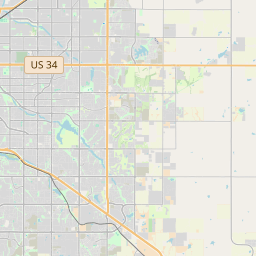Artesian Well Fountain
Historical marker location:
920 East O Street, Lincoln, Nebraska
( Marker can be reached from the intersection of East O Street (U.S. 34) and North 10th Street, on the left when traveling east.)







© OpenStreetMap contributors
The state song of Nebraska is "Beautiful Nebraska," which was written by Jim Fras and Guy G. Miller in 1967.
About Lancaster County
Lancaster County Timeline
Lancaster County, located in Nebraska, has a rich and varied history. The region's history dates back to the ancestral lands of the Pawnee and Otoe tribes, who lived along the Salt Creek in the 1700s. In the early 1800s, European settlers began to arrive in the area, drawn by the fertile soil and the promise of cheap land.
The first permanent European settlement in the area was founded in 1856 when more than 100 settlers established Lancaster, named after the former president, Abraham Lincoln's hometown in Pennsylvania. The next year, Lancaster was designated as the county seat, and in 1867, the county was officially named Lancaster County.
Throughout the late 1800s and early 1900s, Lancaster County experienced rapid growth and development. The arrival of the railroad in the 1870s facilitated transportation and trade, leading to the establishment of new towns and the expansion of existing ones. Agriculture played a crucial role in the county's economy, with crops like corn and wheat becoming major exports.
Lancaster County also played a significant role in the fight for civil rights and equality. In the early 20th century, the city of Lincoln, located within the county, became a center for civil rights activism, with organizations like the National Negro Business League and the Lincoln NAACP working towards social and political change.
Overall, Lancaster County's history is a testament to the resilience and determination of its early settlers and the ongoing efforts of its residents to build a vibrant and inclusive community. From its Native American roots to its status as a thriving agricultural and cultural hub, the county continues to evolve and shape the history of Nebraska.
The first permanent European settlement in the area was founded in 1856 when more than 100 settlers established Lancaster, named after the former president, Abraham Lincoln's hometown in Pennsylvania. The next year, Lancaster was designated as the county seat, and in 1867, the county was officially named Lancaster County.
Throughout the late 1800s and early 1900s, Lancaster County experienced rapid growth and development. The arrival of the railroad in the 1870s facilitated transportation and trade, leading to the establishment of new towns and the expansion of existing ones. Agriculture played a crucial role in the county's economy, with crops like corn and wheat becoming major exports.
Lancaster County also played a significant role in the fight for civil rights and equality. In the early 20th century, the city of Lincoln, located within the county, became a center for civil rights activism, with organizations like the National Negro Business League and the Lincoln NAACP working towards social and political change.
Overall, Lancaster County's history is a testament to the resilience and determination of its early settlers and the ongoing efforts of its residents to build a vibrant and inclusive community. From its Native American roots to its status as a thriving agricultural and cultural hub, the county continues to evolve and shape the history of Nebraska.
Lancaster County Timeline
This timeline provides a concise overview of the key events in the history of Lancaster County, Nebraska.
- 1859 - Lancaster County is established by the Nebraska Territorial Legislature.
- 1864 - The city of Lincoln is chosen as the capital of Nebraska.
- 1867 - The University of Nebraska is founded in Lincoln.
- 1871 - The first railroad, the Burlington and Missouri River Railroad, enters Lancaster County.
- 1904 - The State Capitol building in Lincoln is completed.
- 1937 - The University of Nebraska's Memorial Stadium is built.
- 1969 - The Lincoln Children's Zoo opens to the public.
- 1987 - The Haymarket Park baseball stadium is constructed.
- 2001 - Lincoln's Pinnacle Bank Arena is completed, becoming the home of the University of Nebraska basketball teams.